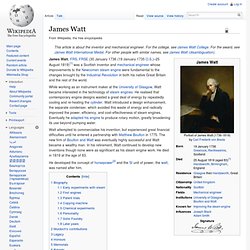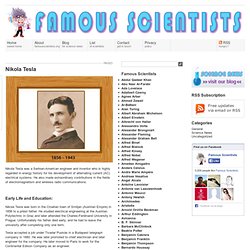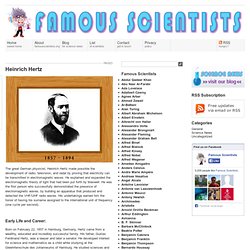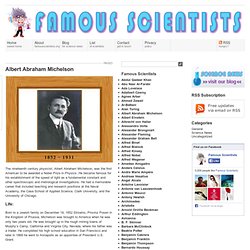

History - James Watt. James Watt. James Watt, FRS, FRSE (30 January 1736 (19 January 1735 O.S.)–25 August 1819)[1] was a Scottish inventor and mechanical engineer whose improvements to the Newcomen steam engine were fundamental to the changes brought by the Industrial Revolution in both his native Great Britain and the rest of the world.

Watt attempted to commercialise his invention, but experienced great financial difficulties until he entered a partnership with Matthew Boulton in 1775. The new firm of Boulton and Watt was eventually highly successful and Watt became a wealthy man. In his retirement, Watt continued to develop new inventions though none were as significant as his steam engine work. He died in 1819 at the age of 83. He developed the concept of horsepower[2] and the SI unit of power, the watt, was named after him. Biography In 1764, Watt married his cousin Margaret (Peggy) Miller, with whom he had five children, two of whom lived to adulthood: James Jr. (1769–1848) and Margaret (1767–1796). First engines. Nikola Tesla. Nikola Tesla was a Serbian-American engineer and inventor who is highly regarded in energy history for his development of alternating current (AC) electrical systems.

He also made extraordinary contributions in the fields of electromagnetism and wireless radio communications. Early Life and Education: Nikola Tesla was born in the Croatian town of Smiljan (Austrian Empire) in 1856 to a priest father. He studied electrical engineering at the Austrian Polytechnic in Graz and later attended the Charles-Ferdinand University in Prague. Unfortunately his father died early, and he had to leave the university after completing only one term. Tesla accepted a job under Tivadar Puskás in a Budapest telegraph company in 1880. Tesla Coil. Isaac Newton. Lived 1643 to 1727.

Isaac Newton is perhaps the greatest physicist who has ever lived. He and Albert Einstein are almost equally matched contenders for this title. Each of these great scientists produced dramatic and startling transformations in the physical laws we believe our universe obeys, changing the way we understand and relate to the world around us. Early Life and Education Isaac Newton was born on January 4, 1643 in the tiny village of Woolsthorpe-by-Colsterworth, Lincolnshire, England. His father, whose name was also Isaac Newton, was a farmer who died before Isaac Junior was born. His mother, Hannah Ayscough, married a churchman when Newton was three years old. Newton disliked his mother’s new husband and did not join their household, living instead with his mother’s mother, Margery Ayscough.
His resentment of his mother and stepfather’s new life did not subside with time; as a teenager he threatened to burn their house down! Advertisements. Heinrich Hertz. The great German physicist, Heinrich Hertz made possible the development of radio, television, and radar by proving that electricity can be transmitted in electromagnetic waves.

He explained and expanded the electromagnetic theory of light that had been put forth by Maxwell. He was the first person who successfully demonstrated the presence of electromagnetic waves, by building an apparatus that produced and detected the VHF/UHF radio waves. His undertakings earned him the honor of having his surname assigned to the international unit of frequency (one cycle per second). Early Life and Career: Born on February 22, 1857 in Hamburg, Germany, Hertz came from a wealthy, educated and incredibly successful family.
Hertz earned his PhD from the University of Berlin in 1880 and worked as an assistant to Helmhotz. During 1886, he married Elizabeth Doll, daughter of his colleague Dr. Contribution: Early Death: During 1892, Hertz was diagnosed with first a head cold and then an allergy. Albert Abraham Michelson. The nineteenth century physicist, Albert Abraham Michelson, was the first American to be awarded a Nobel Prize in Physics.

He became famous for his establishment of the speed of light as a fundamental constant and other spectroscopic and metrological investigations. He had a memorable career that included teaching and research positions at the Naval Academy, the Case School of Applied Science, Clark University, and the University of Chicago. Life: Born to a Jewish family on December 19, 1852 Strzelno, Provinz Posen in the Kingdom of Prussia, Michelson was brought to America when he was only two years old. He was brought up in the rough mining towns of Murphy’s Camp, California and Virginia City, Nevada, where his father was a trader.
During his four years at the Naval Academy, Michelson did extremely well in optics, heat and climatology as well as drawing. He was then employed as a professor of physics at the Case School of Applied Science at Cleveland, Ohio. Achievements: Death: